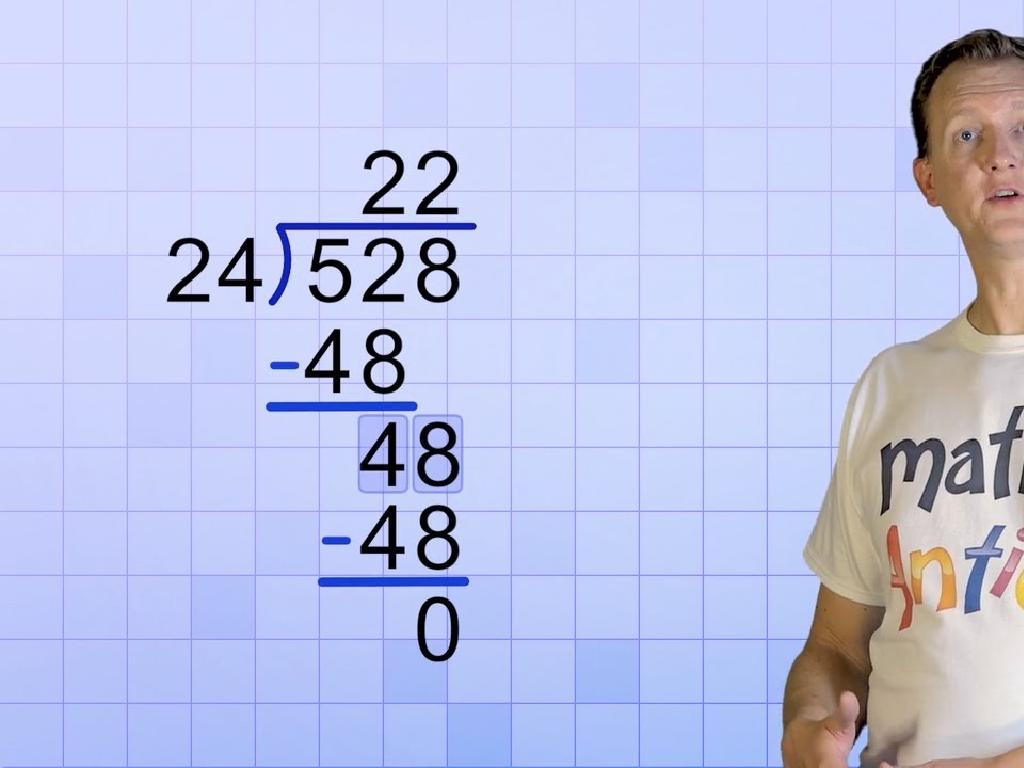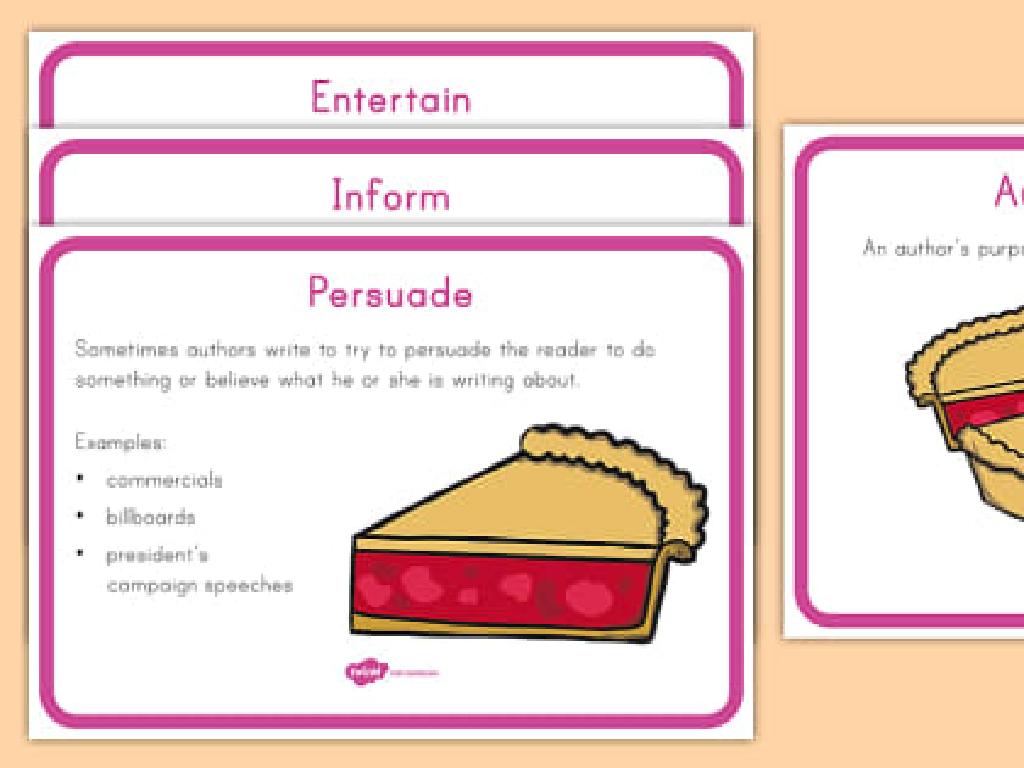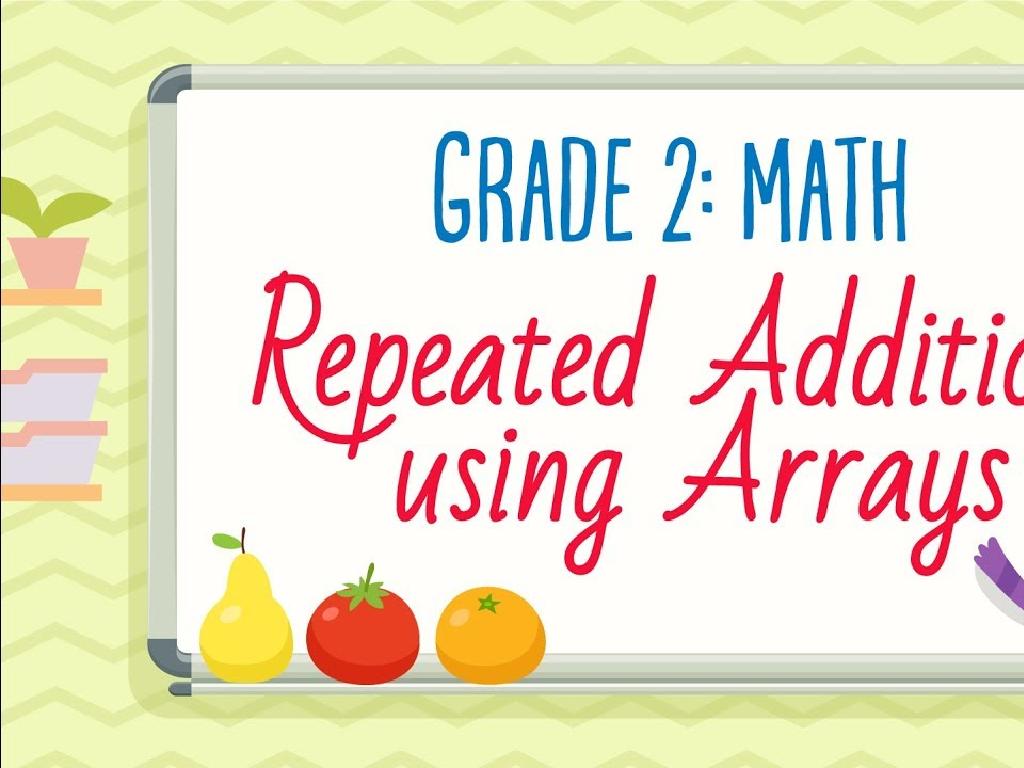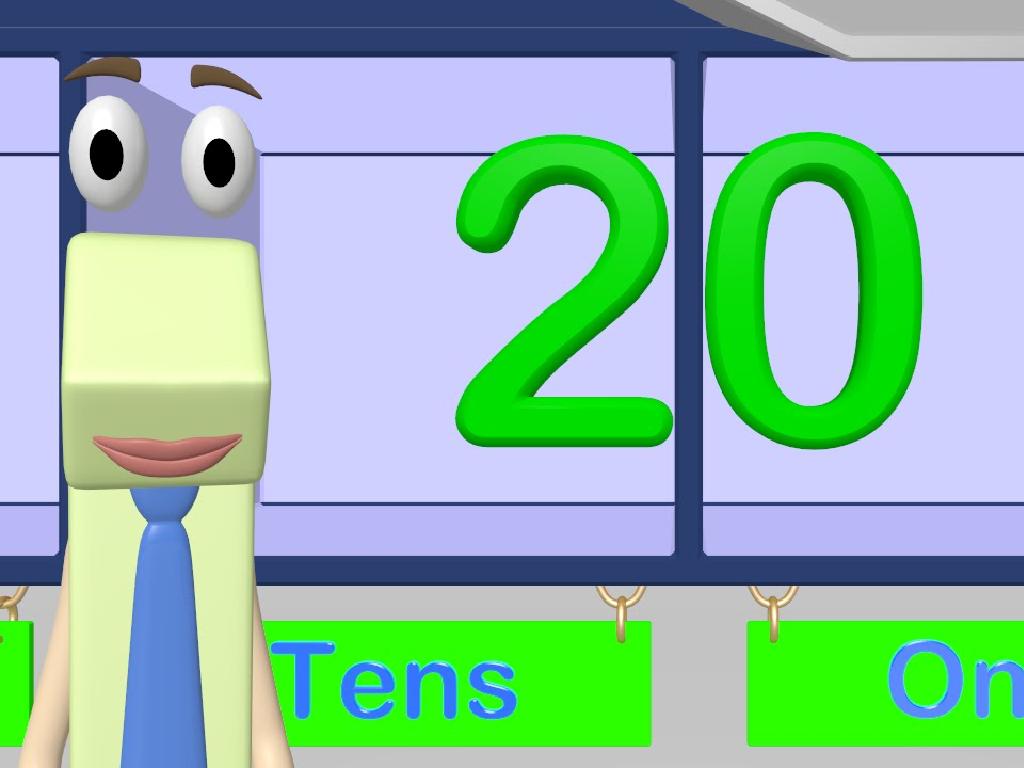Find What Percent One Number Is Of Another
Subject: Math
Grade: Sixth grade
Topic: Percents Of Numbers
Please LOG IN to download the presentation. Access is available to registered users only.
View More Content
Introduction to Percents
– Understanding percents basics
– Percents represent a part of a whole as fractions of 100
– Percents in daily life
– Used in sales tax, discounts, and statistics
– Finding a percent of a number
– To find what percent one number is of another, divide the numbers and multiply by 100
– Practical applications
– Calculate tips, discounts, and interest rates
|
This slide introduces students to the concept of percents, which are a way to express fractions out of 100. It’s crucial for students to understand that percents are used in various aspects of everyday life, such as calculating sales tax, determining discounts during shopping, and understanding statistics in the news. To find the percent one number is of another, students will learn to divide the part by the whole and then multiply by 100 to get the percentage. This foundational skill is applicable in many real-life scenarios, including figuring out how much to tip at a restaurant, how much they save during a sale, and how much interest they earn on savings. The class will involve practical examples and exercises to reinforce these concepts.
Understanding Percents
– Percent means ‘per hundred’
– 1% equals 1 out of 100
– 50% as a fraction is 1/2
– Example: Half of a pizza is the same as 50% of the pizza
– 25% equals a quarter
– Example: If you have 4 quarters, 1 quarter is 25% of the total
|
This slide introduces the concept of percent to the students. Percent, derived from the Latin ‘per centum’, means for every hundred. It is a way to express a number as a fraction of 100. Understanding this is crucial for students as it forms the basis for many real-life applications such as calculating discounts, interest rates, and statistics. To help students grasp this concept, use relatable examples such as portions of pizza to represent 50% or the idea of quarters to explain 25%. Encourage students to think of percents as parts of a whole, which can be translated into fractions or decimals for ease of calculations in various contexts.
Relating Fractions, Decimals, and Percents
– Convert fractions to percents
– To find percent, multiply the fraction by 100
– Turn decimals into percents
– Multiply the decimal by 100 to get the percent
– Practice with conversion examples
– Example: 1/4 to percent and 0.75 to percent
|
This slide aims to help students understand the relationship between fractions, decimals, and percents, which are different ways of expressing proportions. Start by explaining that a percent represents a number out of 100. Show how to convert a fraction to a percent by multiplying by 100 and simplifying. For decimals, demonstrate that multiplying by 100 shifts the decimal point two places to the right. Provide several examples for students to practice these conversions, ensuring they grasp the concept. Encourage students to ask questions and work through the examples together as a class.
Calculating Percent of a Number
– Understand the formula
– Percent x Base = Amount is our key formula
– Identify the Base and Percent
– Base is the whole number, Percent is part of the whole
– Calculate the Amount
– Multiply Percent by Base to find the Amount
– Practice with examples
– Let’s try 25% of 200, and 10% of 50
|
This slide introduces the concept of calculating the percent of a number, which is a fundamental skill in understanding percentages. Start by explaining the formula ‘Percent x Base = Amount’ and ensure students understand each component. The ‘Base’ is the total amount you’re working with, while the ‘Percent’ represents the portion of the Base. Multiplication is used to find the ‘Amount’, which is the actual figure representing the percent of the Base. Provide clear examples, such as finding 25% of 200 by multiplying 0.25 (the decimal form of 25%) by 200 to get 50. Encourage students to practice with different percentages and bases to solidify their understanding. The goal is for students to become comfortable with converting percentages to decimals, identifying the base and the percent, and using multiplication to find the final amount.
Calculating Percentages
– Example 1: Calculate 30% of 150
– 30% of 150 is 45. (30/100)*150 = 45
– Example 2: Find 20% of 80
– 20% of 80 is 16. (20/100)*80 = 16
– Class practice: Work through problems
– Solve similar problems together as a class
– Understand percentage calculations
|
This slide is aimed at providing students with clear examples of how to calculate percentages of given numbers. Start by walking through the first example step by step, showing how to convert the percentage to a decimal and then multiply by the whole number. Repeat the process with the second example. After demonstrating these examples, engage the class in guided practice, allowing them to try similar problems with your support. Emphasize the process of converting a percentage to a decimal and the importance of understanding what the percentage represents in relation to the whole. This foundational skill will be crucial for their success in future math concepts involving percentages.
Real-World Applications of Percents
– Calculating shopping discounts
– Find the sale price by applying the percent discount to the original price.
– Interpreting nutrition labels
– Determine the percentage of daily values for nutrients.
– Analyzing sports statistics
– Compare player stats using percentages for better insights.
– Understanding player performance
– Assess how a player’s stats contribute to the team’s overall performance.
|
This slide aims to show students how percentages are applied in everyday life, enhancing their understanding of the concept. When shopping, percentages are used to calculate discounts, helping consumers know how much they save. Nutrition labels use percentages to show how much of the daily recommended intake a serving of food contains. In sports, percentages are crucial for comparing player statistics and understanding game strategies. Encourage students to bring examples of percentages they encounter, such as in shopping receipts or sports reports, to discuss in class.
Interactive Activity: Percent Scavenger Hunt
– Find classroom items for percent hunt
– Work in pairs to determine percents
– Calculate the percent of one number of another
– Use the formula: (Part/Whole) x 100 = Percent
– Present findings to the class
|
This interactive class activity is designed to help students apply their knowledge of percentages in a fun and engaging way. Students will pair up and look for items around the classroom, such as the number of blue chairs out of the total chairs, to find what percent one number is of another. They will use the formula (Part/Whole) x 100 to calculate the percent. Afterward, each pair will present their findings to the class, explaining how they calculated the percentages. This activity not only reinforces the concept of percentages but also encourages teamwork and presentation skills. Possible variations of the activity could include finding percentages of colored objects, quantities of supplies, or sections of a bulletin board.
Review and Q&A: Understanding Percentages
– Recap today’s percentage lesson
– Invite student questions
– Address student doubts
– Offer more percentage examples
– For instance, find what percent 25 is of 200.
|
This slide is meant to consolidate the students’ learning from the lesson on percentages. Begin with a brief recap of the key points covered today, such as the formula for finding the percentage one number is of another. Open the floor to students, encouraging them to ask questions about any part of the lesson they found challenging. Be prepared to clarify doubts, possibly by revisiting some of the examples used during the lesson. If necessary, provide additional examples to ensure all students have a clear understanding of how to calculate percentages in different scenarios. This interactive session will help reinforce their learning and build confidence in their ability to work with percentages.
Homework: Mastering Percents
– Practice problems on percents
– Solve the given problems to understand percents better
– Apply lesson to real-world scenarios
– Use examples like discounts, tax, and recipes
– Get ready for the next quiz
– Review today’s material to prepare for the quiz
|
This homework assignment is designed to reinforce the concepts taught in today’s class about finding what percent one number is of another. Students should complete the practice problems to solidify their understanding of calculating percents. Encourage them to apply what they’ve learned to real-world situations, such as figuring out sale prices, calculating tax, or adjusting recipes. This will help them see the practical applications of percents in everyday life. Lastly, inform the students that there will be a quiz during the next class to assess their understanding of percents. Provide them with study tips and remind them to review their notes and practice problems to prepare.





